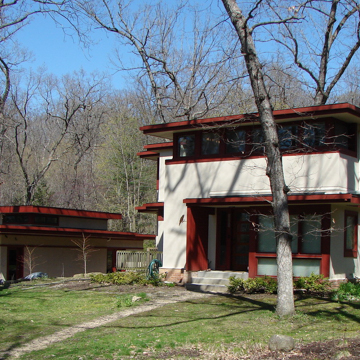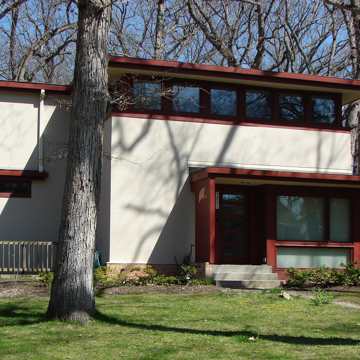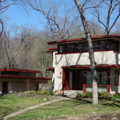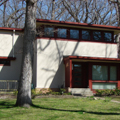Here the full expression of Kaeser’s personal style can be seen—modern, yet undeniably regional, fusing Frank Lloyd Wright’s Prairie School idioms with the principles of the avant-garde International Style. Kaeser had studied architecture with Eliel Saarinen, a leading modernist who encouraged an eclectic approach. Perhaps prodded by his mentor, Kaeser grasped the continuity between the International and Prairie styles. The unadorned, white stucco walls appear as merely a thin skin enclosing a volume of space, in keeping with the International Style. Ribbons of windows enhance the effect; turning the corners and sheltered by a cantilevered flat roof and deep eaves, they look like voids cut into the membranous walls. At the same time, horizontal lines evoke the flat midwestern landscape, which distinguishes the Prairie Style.
You are here
Russell Hibbard House
If SAH Archipedia has been useful to you, please consider supporting it.
SAH Archipedia tells the story of the United States through its buildings, landscapes, and cities. This freely available resource empowers the public with authoritative knowledge that deepens their understanding and appreciation of the built environment. But the Society of Architectural Historians, which created SAH Archipedia with University of Virginia Press, needs your support to maintain the high-caliber research, writing, photography, cartography, editing, design, and programming that make SAH Archipedia a trusted online resource available to all who value the history of place, heritage tourism, and learning.









